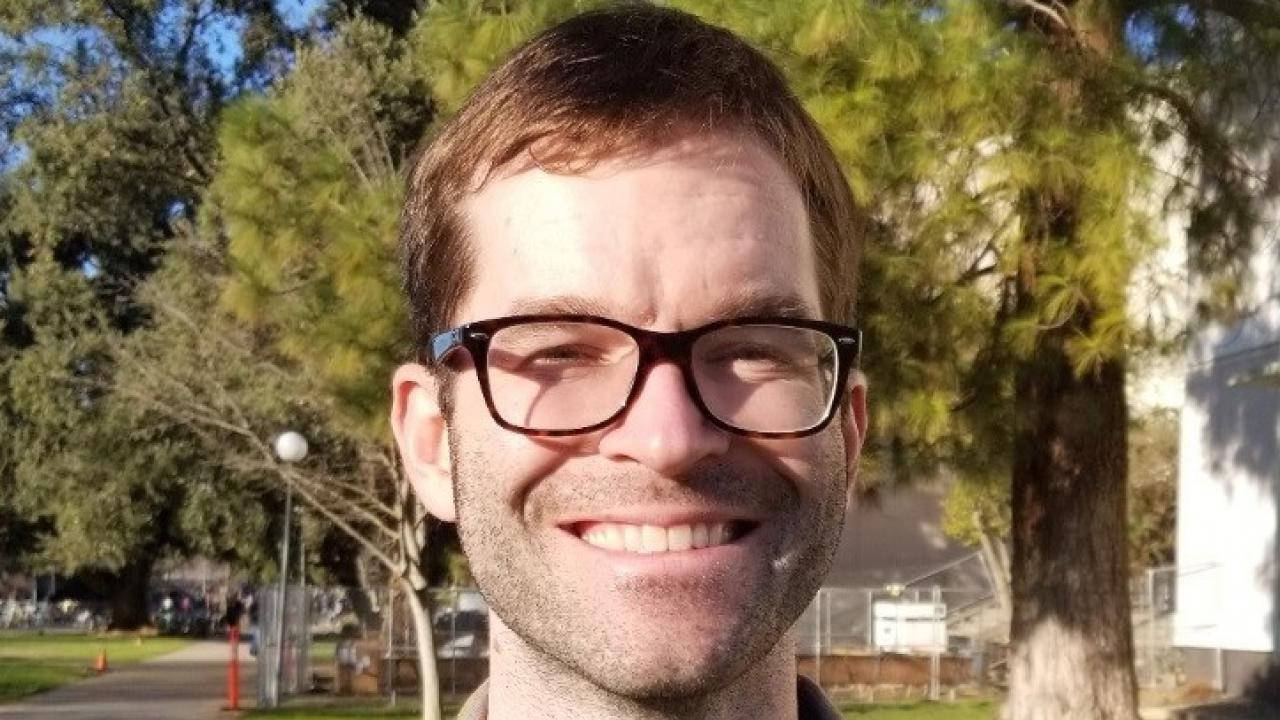
Thomas Harrelson: Toward a Better Understanding of Plastic Electronics
By Elizabeth Thomson
When you think about the materials behind computers, silicon comes to mind for most people. But there’s another class of electronic materials that could allow a slew of new applications because, unlike silicon, the materials are flexible and can be transparent. “These organic electronics are effectively plastics that can conduct electricity,” said Thomas Harrelson, who is scheduled to receive his Ph.D. in chemical engineering from UC Davis this spring.
Organic electronics aren’t as well-known commercially, however, because they often don’t work as well as silicon. And scientists don’t fully know why, says Harrelson, who is helping to change that. “I use computer simulations to understand and predict how organic electronics work. Then, using that information we can try to design new molecules that have better properties than the current ‘best’ technology.”
Harrelson works at the atomic scale. He incorporates into his computer simulations experimental data derived from bombarding a given organic electronic material with sub-atomic neutrons. Much like a billiard ball hitting another, when a neutron hits an atom it transfers its momentum to that atom, which changes the atom’s natural vibration. Those changes in vibration can be measured and used to determine the structure of the overall material.
Harrelson is first author of a paper that shows, for the first time, how computer simulations based on this data can predict the previously unknown structure of a given organic electronic.
He is also first author of two other papers—plus another that is being written—that explore other applications of the work. In one, for example, “we used the types of vibrations in a material to predict important macroscopic properties in organic electronics,” Harrelson said.
Overall, the goal is to get computers to predict what chemistries will lead to the most effective organic electronics for specific applications. “You can try different chemistries in the computer without having to first synthesize the materials in the lab,” Harrelson said, which will cut the time for developing new materials. Ultimately experimentalists will then create and test the actual materials predicted by the machine.
Harrelson notes that his two advisors—Professors Adam Moule and Roland Faller of the Department of Chemical Engineering—“have been instrumental to everything.” Among other things, they made it possible for him to attend a Gordon Research Conference for computational chemistry, which was one of the most exciting experiences he’s had in science. “At that conference I saw what all the best scientists were doing, and it was really fun and eye-opening,” Harrelson said.
Moule and Faller also supported Harrelson’s internship at Oak Ridge National Laboratory, where he learned how to simulate neutron scattering, the key to his research. And during his sabbatical, Moule brought Harrelson to the Max Planck Institute for Polymer Research, “where some of the best polymer research is being done.”
Professors Moule and Faller, plus his experiences at UC Davis overall, “really turned me into the scientist I am today,” Harrelson concluded.
